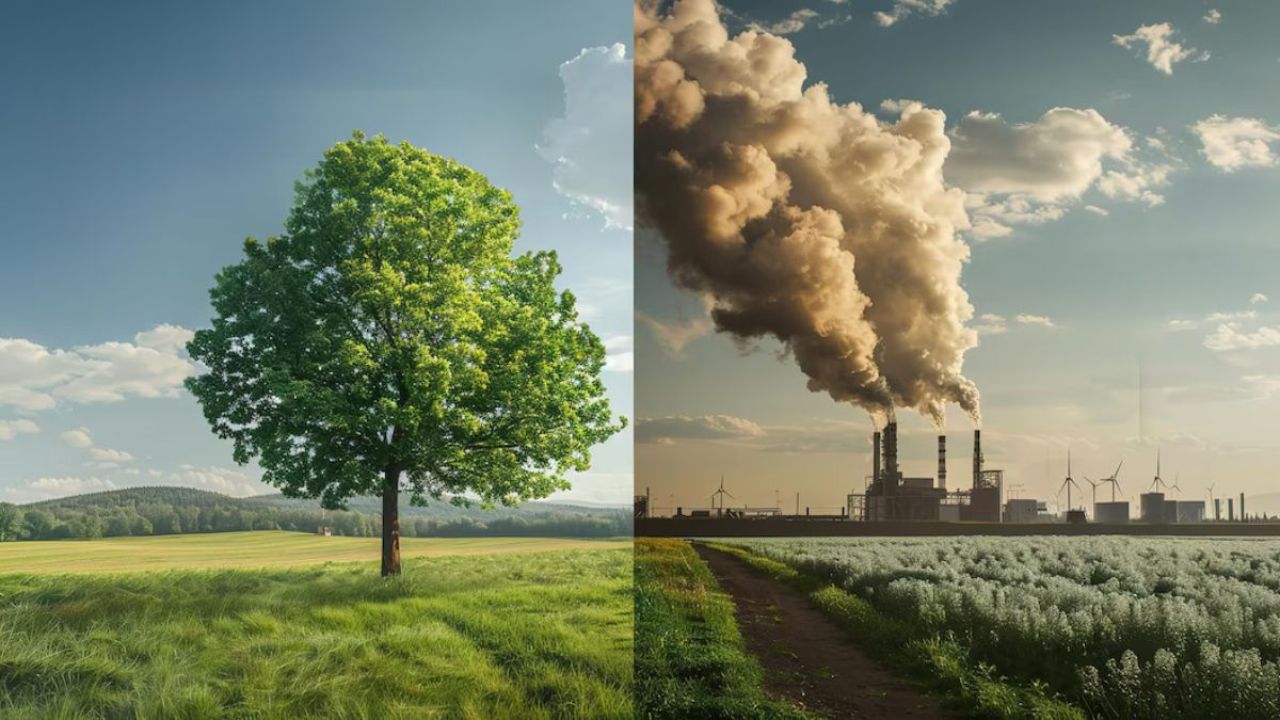Dorsten vs Fresno pollution comparison chart is an escalating global issue, but the severity and sources of pollution can vary dramatically from one city to another. Two cities on different continents—Dorsten, a small town in Germany, and Fresno, a large city in California, USA—present contrasting pollution landscapes. While Dorsten is nestled in an area known for its green spaces, Fresno struggles with pollution from agricultural activities, traffic, and industrial emissions. This article compares the pollution levels in Dorsten and Fresno, outlining the differences in air quality, pollution sources, and the long-term health impacts on their residents.
Air Quality in Dorsten vs Fresno: An Overview
When comparing the pollution levels between Dorsten and Fresno, air quality emerges as a key factor. Air quality is often measured by the Air Quality Index (AQI), which considers pollutants such as particulate matter (PM2.5 and PM10), nitrogen dioxide (NO2), ozone (O3), and carbon monoxide (CO). Let’s explore how these pollutants affect both cities.
Dorsten: Air Quality and Main Pollutants
Dorsten, situated in North Rhine-Westphalia, benefits from a relatively clean environment compared to many larger urban areas. Thanks to its rural and semi-urban setup, Dorsten experiences lower levels of pollutants. The primary sources of pollution in Dorsten include:
- Vehicle emissions: Although Dorsten is less congested than major cities, vehicles still contribute to NO2 levels.
- Industrial activities: North Rhine-Westphalia is a historically industrialized area, and while this has reduced in modern times, some industries still emit pollutants.
- Agriculture: As a town close to rural areas, agricultural activities can contribute to ammonia (NH3) emissions, affecting air quality.
- Average AQI in Dorsten: Dorsten consistently records AQI levels between 20 and 50, indicating good air quality most of the year.
Fresno: Air Quality and Main Pollutants
In contrast, Fresno, located in California’s agriculturally rich Central Valley, suffers from poor air quality due to a mix of geographical, industrial, and environmental factors. Fresno is one of the cities in the U.S. with some of the worst air pollution.
The main sources of pollution in Fresno include:
- Agricultural activities: Intensive farming releases particulate matter (PM) and pesticides into the air.
- Vehicle traffic: As a major urban area, Fresno deals with high levels of emissions from cars, trucks, and buses, contributing to NO2 and CO levels.
- Wildfires: California’s frequent wildfires significantly degrade air quality, releasing PM2.5 and volatile organic compounds (VOCs).
- Average AQI in Fresno: Fresno often records AQI levels between 100 and 150, which signifies unhealthy air for sensitive groups, especially during wildfire season.
Particulate Matter (PM2.5 and PM10) Comparison
Particulate matter is one of the most harmful pollutants because it penetrates deep into the lungs and can cause serious health problems such as respiratory illnesses, heart disease, and lung cancer.
Dorsten’s Particulate Matter Levels
Dorsten’s PM levels are generally low, particularly when compared to urban or industrial hotspots. The town experiences PM10 levels well below European Union thresholds, with most readings falling between 10 to 20 µg/m³. PM2.5 levels, which are smaller and more harmful, remain between 5 to 10 µg/m³ during most of the year.
Fresno’s Particulate Matter Levels
Fresno, however, suffers from dangerously high PM levels, particularly in the PM2.5 category. Fresno’s PM2.5 levels often exceed 40 µg/m³ during wildfire seasons, well above the recommended safety thresholds. This makes Fresno one of the more polluted cities in California in terms of particulate matter, with PM10 levels frequently rising above 50 µg/m³.
Emissions and Pollutant Sources: Urban vs Rural
The contrast between Dorsten and Fresno is also clear when it comes to the sources of pollution.
Dorsten’s Emission Profile
As a smaller town, Dorsten doesn’t face the same level of industrial or traffic-related emissions as Fresno. Its emissions are more tied to:
- Low population density: Fewer vehicles and less industrial activity compared to larger cities.
- Limited industrial pollutants: While the town is in a historically industrial area, it does not have heavy industries on a large scale.
- Cleaner energy: Germany’s focus on renewable energy sources has helped reduce emissions in small towns like Dorsten.
Fresno’s Emission Profile
Fresno, on the other hand, faces multiple pollution challenges:
- High vehicle emissions: As a significant urban center, Fresno experiences traffic congestion, leading to higher CO2, NO2, and particulate emissions.
- Agricultural emissions: Fresno’s economy is deeply tied to agriculture, and the use of fertilizers and pesticides contributes to air and soil pollution.
- Industrial and commercial activities: As a larger city, Fresno has more industries that emit various pollutants, adding to the air quality issues.
Health Impacts of Pollution in Dorsten vs Fresno
The pollution levels in Dorsten and Fresno lead to significant differences in the health of their populations.
Dorsten: Health Effects
Because Dorsten has relatively clean air, the town does not experience the same level of pollution-related health issues as more polluted cities. However, residents who live near industrial sites or high-traffic areas may still be at risk for:
- Respiratory issues: Prolonged exposure to NO2 and particulate matter can increase the risk of asthma and other respiratory conditions.
- Mild cardiovascular risk: Even in low-pollution areas, prolonged exposure to small amounts of pollutants may increase heart disease risk, although less than in heavily polluted areas.
Fresno: Health Effects
Fresno’s population, on the other hand, is at significant risk due to the city’s high pollution levels. The health effects are particularly severe for:
- Children and the elderly: These groups are most susceptible to air pollution, which can exacerbate asthma, bronchitis, and other lung conditions.
- Chronic conditions: Long-term exposure to high PM2.5 levels is linked to cardiovascular diseases, lung cancer, and decreased life expectancy.
- Wildfire pollution impacts: During wildfire season, Fresno’s air quality drastically worsens, leading to increased hospital admissions for respiratory and heart-related issues.
Climate Impact and Environmental Sustainability
The long-term sustainability of both cities is affected by their approach to environmental management and pollution control.
Dorsten: Green Initiatives
Germany, and by extension Dorsten, has been proactive in implementing green policies aimed at reducing emissions. Some initiatives include:
- Renewable energy: Germany’s push for solar and wind energy has reduced reliance on fossil fuels, improving air quality.
- Public transportation: Efficient public transit options help limit the number of cars on the road, reducing NO2 emissions.
Fresno: Environmental Challenges
Fresno faces more significant environmental challenges due to its reliance on agriculture and heavy vehicle traffic. Efforts to combat pollution in Fresno include:
- Cleaner farming practices: Efforts are being made to adopt sustainable agricultural practices to reduce the use of harmful pesticides and fertilizers.
- Electric vehicles: California’s push for electric vehicles (EVs) is slowly being adopted in Fresno, which could help reduce vehicle emissions over time.
Conclusion
When comparing the pollution levels of Dorsten and Fresno, it’s evident that Fresno faces more significant pollution challenges due to its agricultural activities, traffic congestion, and wildfire susceptibility. Dorsten, by contrast, benefits from a cleaner environment, with fewer pollution sources and proactive environmental policies in place. The health impacts of pollution are more severe in Fresno, especially for vulnerable populations, while Dorsten enjoys a generally healthier air quality. However, both cities continue to face environmental challenges that require ongoing attention and action.
FAQs
What is the air quality difference between Dorsten and Fresno?
Dorsten generally has better air quality than Fresno, with AQI levels indicating clean air most of the year. Fresno, due to pollution from agriculture, traffic, and wildfires, often experiences poor air quality.
How does particulate matter in Dorsten compare to Fresno?
Dorsten’s particulate matter levels are significantly lower than Fresno’s. Fresno often experiences PM2.5 levels well above safe limits, especially during wildfire seasons.
Why is Fresno more polluted than Dorsten?
Fresno’s pollution is primarily due to its heavy reliance on agriculture, vehicle traffic, and susceptibility to wildfires, whereas Dorsten benefits from less industrial activity and cleaner energy sources.
What health impacts does pollution have in Fresno vs Dorsten?
Fresno’s residents face greater risks of respiratory and cardiovascular diseases due to higher levels of particulate matter and other pollutants, whereas Dorsten’s cleaner air results in fewer health problems.
How does wildfire smoke affect air quality in Fresno?
Wildfires drastically increase the levels of PM2.5 and VOCs in Fresno, leading to hazardous air quality that poses significant health risks, particularly during the fire season.
What are the main sources of pollution in Dorsten?
In Dorsten, the main sources of pollution are vehicle emissions, some industrial activity, and agriculture, though at much lower levels than in larger cities.











